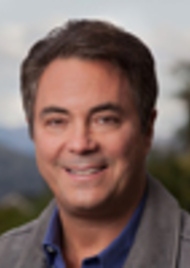By: Clint Wilder

Back in 1998, Forbes magazine ran a story pooh-poohing the solar power industry. The article called the concept of spurring demand to increase production and bring costs down "an error in the history of solar energy" and brushed aside a million solar roofs proposal from then-President Bill Clinton with the line, "The religion of environmentalism dies hard." The year 1998 also saw the debut of Forbes' annual "E-Gang" feature - a series of profiles of leading companies and entrepreneurs in the year's hottest technology sector (that year, it was E-commerce pioneers like Yahoo and OnSale). How times have changed. This year, on the cover of the Sept. 3 issue of Forbes, is Applied Materials CEO Michael Splinter in front of the headline "Shine On! The New Players in Solar Power Generate Golden Returns (Really)." The article profiles solar energy leaders like Applied Materials, Miasole, Kyocera, and Germany's Conergy - the Forbes E-Gang of 2007. Golden returns - really. From the Nevada desert to the roofs of Wal-Mart stores to the legendary plains of Spain, solar is entering a bold, bright new era. Each week, solar seems to be winning new enthusiasts like Forbes, new investors of all stripes, and new large-scale business users like Wal-Mart, Macy's and Kohl's. Late last month, North Carolina Governor Mike Easley signed that state's first renewable portfolio standard into law, which includes a solar set-aside. The North Carolina RPS, though modest (12.5% electricity from renewables by 2021, with incremental mandates every three years before then), is significant for three reasons. It brings the total number of U.S. states with an RPS to 25; it's the home of highly influential utility Duke Energy, whose CEO Jim Rogers is an outspoken leader on climate change; and it pokes a big hole in the argument advanced by nationwide RPS critics that Southeastern states don't have adequate clean energy resources to meet RPS targets. But back to solar. Investment money is pouring in, production lines are humming and expanding, the silicon shortage is being addressed, and the long-fought challenge of bringing solar to scale (the title of a 2002 Clean Edge report) is finally showing real hope. Last month, red-hot Chinese solar wafer supplier LDK Solar (whose second-quarter revenue grew 700%) announced manufacturing expansions that would raise its production capacity above 1,600 megawatts by the end of 2009. German solar cell producer ersol Solar Energy AG just inked a contract for 1 billion euros to supply Germany PV module company Solon AG for 11 years. Big scale is happening on the deployment side as well. Acciona's 64 MW parabolic-trough Nevada Solar One project, the world's first solar thermal plant in 16 years, went online in June. Less than three months after Portugal opened the GE-financed, SunPower-built Serpa Solar Power Plant - the world's largest PV plant at 11 MW - Cleantech America in San Francisco announced plans for an 80 MW solar farm, aimed for 2011 completion, in California's Central Valley. What's making all this possible, as Forbes points out, is increased global confidence that solar will soon be price-competitive with grid power, even without heavy subsidies, in major markets like Los Angeles, San Francisco, Phoenix, and Las Vegas. (Other less sunny areas, ranging from Germany to New Jersey, have the right incentives in place to make the numbers work). The key solar trends that Ron Pernick and I mapped out in our book The Clean Tech Revolution - scaling up manufacturing and driving down costs - are coming to pass. Do big hurdles remain? Of course. Thin-film solar pioneer Miasole, for example, has had to push its targeted commercial production date back nearly two years, to this year's fourth quarter, because of unexpected technical challenges. And state and federal subsidies will always be a moving target, as will solar company stock prices riding the investor expectations roller coaster (although for what it's worth, the stocks of First Solar, SunPower, LDK and many others have had terrific performance so far this year). At this month's Solar Power 2007 conference in Long Beach, California, the featured speakers include one hard-charging business mogul (Ted Turner) and another who played one on TV (Larry Hagman). Yes, Hagman is a solar maven, living in a PV-powered southern California home and supporting the Solar Electric Light Fund that promotes clean energy in the developing world. Who would have thought we'd see both Forbes magazine and J.R. Ewing on board the solar bandwagon? I'd say the solar future looks bright. -------- Wilder is Clean Edge's contributing editor and co-author of The Clean Tech Revolution. E-mail him at wilder[at]cleanedge[dot]com.

